Indoor vs Outdoor THCA Cultivation: Which Method Produces Better Results?
The cannabis cultivation landscape has evolved dramatically over the past decade, with growers constantly seeking the most effective methods to produce high-quality THCA flower. As the demand for premium cannabis products continues to rise, cultivators face a fundamental decision: should they invest in indoor THCA cultivation or embrace the traditional approach of outdoor THCA growing? This comprehensive guide examines both cultivation methods, analyzing their respective advantages, challenges, and outcomes to help you make an informed decision.
THCA, or tetrahydrocannabinolic acid, represents the non-psychoactive precursor to THC found naturally in raw cannabis plants. When exposed to heat through smoking, vaping, or cooking, THCA converts to THC through a process called decarboxylation. Understanding the nuances of THCA flower quality production requires examining how different cultivation environments affect the plant's cannabinoid development, terpene profiles, and overall therapeutic potential.
The choice between indoor and outdoor cultivation methods significantly impacts every aspect of cannabis production, from initial investment costs to final product quality. Cannabis cultivation methods have evolved to accommodate various growing environments, each offering distinct advantages depending on the cultivator's goals, resources, and market demands. This analysis will provide you with the knowledge needed to determine which approach aligns best with your cultivation objectives.

The Science Behind Indoor THCA Cultivation
Indoor THCA cultivation represents the pinnacle of agricultural precision, offering unprecedented control over every environmental variable that influences plant development. This method utilizes sophisticated technology to create optimal growing conditions year-round, regardless of external weather patterns or seasonal limitations.
Complete Environmental Mastery
The primary advantage of indoor cultivation lies in its ability to maintain consistent environmental parameters. Temperature control systems maintain optimal ranges between 70-80°F during the day and 65-75°F at night, ensuring steady metabolic processes throughout the plant's lifecycle. Humidity levels can be precisely regulated, typically maintained at 40-50% during flowering to prevent mold and mildew while promoting healthy trichome development.
Advanced lighting systems, including full-spectrum LED arrays and high-intensity discharge lamps, provide consistent photosynthetic energy. These systems allow growers to manipulate photoperiods with surgical precision, triggering flowering cycles exactly when desired and maintaining vegetative growth for extended periods. The controlled light spectrum can be adjusted to promote specific cannabinoid and terpene production profiles.
Air circulation systems ensure proper ventilation while maintaining CO2 levels between 1000-1500 PPM during peak photosynthesis periods. This controlled environment cannabis approach eliminates variables that could negatively impact plant health, resulting in more predictable outcomes and higher success rates.
Maximizing THCA Potency Through Precision
Indoor cultivation excels at producing high-potency THCA flower through meticulous environmental control. Studies have shown that THCA potency comparison between indoor and outdoor methods often favors indoor production, with indoor-grown cannabis frequently achieving 20-30% higher cannabinoid concentrations.
The controlled environment allows for precise nutrient delivery through hydroponic or soilless growing mediums. Automated feeding systems can deliver exact nutrient ratios at optimal pH levels, ensuring maximum nutrient uptake efficiency. This precision feeding approach promotes vigorous trichome development, where THCA is primarily produced and stored.
Light penetration can be optimized through training techniques like Screen of Green (SCROG) or Sea of Green (SOG), ensuring even canopy development and maximum light exposure to flowering sites. The absence of weather-related stress allows plants to dedicate more energy to cannabinoid production rather than survival mechanisms.
Year-Round Production Capabilities
Indoor facilities enable continuous harvests throughout the year, with experienced growers achieving 4-6 harvest cycles annually. This consistent production schedule provides steady revenue streams and allows for rapid genetic selection and improvement programs. Perpetual harvest systems can be implemented, where different growth stages occur simultaneously in separate chambers.
The controlled environment eliminates seasonal variables that could affect THCA growing techniques, allowing cultivators to perfect their methods through repeated cycles under identical conditions. This consistency enables data-driven optimization, where small environmental adjustments can be tested and refined systematically.
Exploring Outdoor THCA Growing Advantages
Outdoor THCA growing harnesses the power of natural systems, utilizing the sun's full spectrum of light energy and natural environmental cycles to produce robust, flavorful cannabis. This traditional cultivation method offers unique benefits that indoor systems cannot replicate.
Harnessing Natural Solar Energy
The sun provides an unmatched full-spectrum light source that no artificial lighting system can completely replicate. Natural sunlight delivers photosynthetically active radiation (PAR) at intensities reaching 2000+ μmol/m²/s, significantly higher than most indoor lighting systems. This intense natural energy drives photosynthesis at maximum efficiency, often resulting in larger plant structures and enhanced terpene development.
Outdoor plants can grow significantly larger than their indoor counterparts, with some varieties reaching heights of 10-15 feet and producing yields of 1-5 pounds per plant under optimal conditions. The unlimited vertical growing space allows for natural plant architecture expression, often resulting in more robust root systems and increased overall biomass production.
Natural environmental fluctuations, including temperature variations and seasonal changes, can trigger beneficial stress responses that enhance secondary metabolite production. These mild stressors often contribute to more complex terpene profiles and unique flavor characteristics that distinguish outdoor-grown THCA flower quality.
Economic Efficiency and Sustainability
Outdoor cultivation requires significantly lower operational costs compared to indoor methods. The elimination of artificial lighting, climate control systems, and intensive infrastructure reduces ongoing electricity expenses by 80-90%. This economic advantage allows smaller-scale cultivators to enter the market with minimal capital investment.
The environmental sustainability of outdoor growing aligns with increasing consumer demand for eco-friendly products. Natural cultivation methods utilize renewable solar energy, reduce carbon footprints, and minimize resource consumption. Water usage can be optimized through rainwater collection and efficient irrigation systems, further reducing environmental impact.
Land efficiency in outdoor cultivation enables large-scale production that can meet regional demand while maintaining cost-effectiveness. Cannabis cultivation methods that utilize natural growing conditions often produce sufficient quantities to supply entire market regions from single facilities.
Natural Terroir and Unique Characteristics
Outdoor cultivation allows plants to express natural genetic characteristics influenced by local environmental conditions, creating unique "terroir" similar to wine production. Soil microbiomes, local climate conditions, and regional environmental factors contribute to distinctive flavor profiles and effects that cannot be replicated indoors.
The seasonal growing cycle naturally aligns with cannabis's evolutionary biology, potentially enhancing the plant's natural stress resistance and overall health. Plants grown outdoors often develop stronger cellular structures and more robust immune systems, resulting in hardier, more resilient crops.
Natural predator-prey relationships in outdoor environments can reduce pest pressures through biological control methods. Beneficial insects, birds, and other wildlife contribute to natural ecosystem balance, reducing the need for chemical interventions while promoting sustainable cultivation practices.
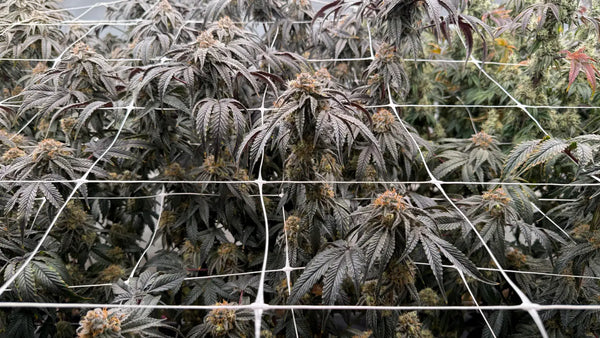
Critical Environmental Control Factors
The success of both indoor THCA cultivation and outdoor THCA growing depends heavily on managing key environmental variables that directly influence plant health, cannabinoid production, and final product quality.
Temperature Management Strategies
Temperature regulation represents one of the most critical factors affecting THCA production and overall plant health. Cannabis plants thrive within specific temperature ranges that vary depending on growth stage and cultivation method. During vegetative growth, optimal temperatures range from 75-85°F, while flowering plants prefer slightly cooler conditions between 70-80°F.
Indoor cultivation systems provide precise temperature control through HVAC systems, allowing growers to maintain optimal conditions regardless of external weather. Automated climate control systems can adjust heating and cooling in real-time, responding to internal heat generation from lighting systems and maintaining target temperatures within 1-2 degree ranges.
Outdoor growers must work within natural temperature variations, selecting appropriate genetics and timing planting schedules to align with favorable weather patterns. Greenhouse structures can provide partial environmental control while maintaining many benefits of natural growing conditions. Season extension techniques, including cold frames and row covers, allow outdoor growers to extend growing seasons and protect plants during temperature fluctuations.
Temperature stress can significantly impact THCA production, with extreme heat reducing cannabinoid synthesis and cold stress potentially damaging cellular structures. Controlled environment cannabis production systems monitor and adjust temperatures continuously to prevent stress-related quality degradation.
Humidity Control and Disease Prevention
Relative humidity management directly impacts plant health, disease resistance, and final product quality. Optimal humidity levels vary throughout the growth cycle, starting at 65-70% during early vegetative growth and gradually decreasing to 40-50% during late flowering to prevent mold and mildew development.
Indoor systems utilize dehumidification equipment, ventilation fans, and air circulation systems to maintain target humidity levels. Advanced climate control systems monitor humidity in real-time and automatically adjust environmental conditions to prevent fluctuations that could stress plants or create conditions favorable to pathogenic organisms.
Outdoor cultivation faces greater humidity challenges, as natural weather patterns can create extended periods of high humidity that promote fungal diseases. Strategic plant spacing, proper pruning techniques, and variety selection become crucial factors in preventing humidity-related problems. Greenhouse and high tunnel structures can provide partial humidity control while maintaining natural growing benefits.
Humidity stress affects both THCA production and terpene development. High humidity during flowering can reduce trichome production and create conditions favoring bud rot, while extremely low humidity can stress plants and reduce overall yields. Effective humidity management ensures optimal conditions for THCA growing techniques success.
Lighting Optimization for Cannabinoid Production
Light quality, intensity, and duration directly influence cannabinoid synthesis pathways and overall plant development. Cannabis requires specific light spectrums during different growth phases, with blue light promoting vegetative growth and red light encouraging flowering and resin production.
Indoor lighting systems provide complete control over photoperiods and light spectrum composition. LED technology allows growers to customize light recipes that optimize cannabinoid and terpene production. Modern LED systems can produce specific wavelengths that enhance THCA synthesis while minimizing energy consumption and heat generation.
Daily Light Integral (DLI) measurements help optimize light exposure for maximum cannabinoid production. Most cannabis varieties require 35-65 mol/m²/day during flowering to achieve optimal THCA production. Indoor systems can deliver consistent DLI values regardless of weather conditions, while outdoor plants receive varying light exposure based on seasonal changes and weather patterns.
Light stress from excessive intensity or duration can reduce cannabinoid production and cause photodamage. Indoor vs outdoor cannabis cultivation methods require different lighting strategies to optimize plant health and maximize THCA production potential.
Nutrient Management and Feeding Programs
Proper nutrition directly affects cannabinoid biosynthesis pathways and overall plant health. Cannabis requires balanced ratios of macronutrients (nitrogen, phosphorus, potassium) and micronutrients (calcium, magnesium, sulfur, iron, etc.) throughout its lifecycle.
Indoor cultivation systems often utilize hydroponic or soilless growing methods that provide precise nutrient control. Automated feeding systems can deliver exact nutrient concentrations at optimal pH levels, ensuring maximum uptake efficiency. Real-time monitoring systems track nutrient concentrations and automatically adjust feeding programs based on plant needs.
Organic soil-based systems, common in outdoor cultivation, rely on biological processes to release nutrients gradually. Composted organic matter, beneficial microorganisms, and natural soil chemistry create complex nutrient relationships that can enhance flavor profiles and terpene development. However, these systems provide less precise control over nutrient availability.
Nutrient deficiencies or toxicities can significantly impact THCA production and overall yield quality. Nitrogen excess during flowering can reduce cannabinoid concentrations, while phosphorus deficiency can limit trichome development. Successful cannabis cultivation methods require careful attention to nutrient management throughout the growing cycle.
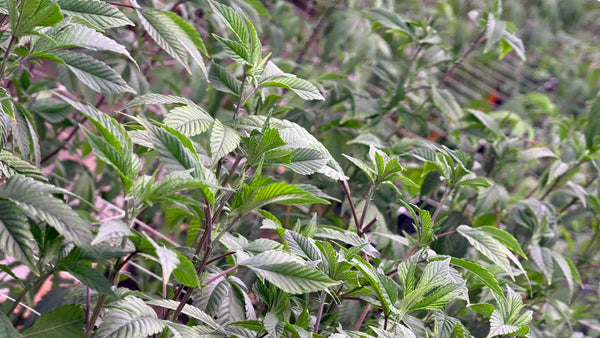
Comprehensive Quality Metrics Comparison
Evaluating THCA flower quality requires examining multiple factors that contribute to the overall consumer experience, therapeutic potential, and market value of the final product. Both indoor and outdoor cultivation methods can produce exceptional quality cannabis, but they often excel in different quality metrics.
Cannabinoid Potency Analysis
Laboratory testing consistently shows that THCA potency comparison between indoor and outdoor cultivation methods reveals distinct patterns. Indoor-grown cannabis frequently achieves higher total cannabinoid concentrations, often testing 2-5% higher in THCA content compared to outdoor counterparts.
The controlled environment of indoor cultivation allows for optimized conditions during the critical final weeks of flowering when trichome production peaks. Precise environmental control prevents stress that could reduce cannabinoid synthesis, while optimal lighting and nutrition support maximum resin production.
However, outdoor cultivation can produce exceptional potency levels when growing conditions align favorably. Some outdoor cultivators report THCA levels exceeding 25% in optimal conditions, particularly when utilizing high-quality genetics and advanced cultivation techniques. The key difference lies in consistency, with indoor methods producing more predictable potency levels across multiple harvests.
Cannabinoid profile diversity also varies between cultivation methods. Outdoor plants often develop more complex minor cannabinoid profiles due to natural environmental stressors and longer growing seasons. These minor cannabinoids, including CBG, CBC, and CBN, contribute to the entourage effect and overall therapeutic potential.
Terpene Profile Development
Terpene production represents a crucial quality factor that significantly impacts flavor, aroma, and effects. These aromatic compounds contribute to the unique sensory experience and therapeutic properties of different cannabis varieties.
Outdoor cultivation often excels in terpene diversity and intensity due to natural environmental factors that stress plants beneficially. Temperature fluctuations, UV radiation, and natural light cycles can enhance terpene biosynthesis pathways, resulting in more complex and robust flavor profiles.
Indoor systems provide consistent terpene production but may lack the environmental triggers that promote exceptional terpene development. However, advanced indoor techniques, including controlled stress applications and specialized lighting spectrums, can enhance terpene production in controlled environments.
The preservation of volatile terpenes during harvest and processing affects final product quality regardless of cultivation method. Proper drying and curing techniques become critical factors in maintaining the terpene profiles developed during cultivation.
Visual Appeal and Bag Appeal
Consumer preferences often prioritize visual characteristics including bud structure, trichome coverage, and color development. These aesthetic factors significantly influence market value and consumer perception of quality.
Controlled environment cannabis production typically produces more consistent visual characteristics with dense, uniform bud structures and heavy trichome coverage. The absence of weather-related stress results in pristine flower appearance without damage from wind, rain, or pests.
Outdoor cultivation can produce visually stunning flowers with unique characteristics influenced by natural growing conditions. Sun-grown cannabis often develops vibrant colors and natural bud structures that many consumers find appealing. However, outdoor flowers may show signs of environmental exposure that could affect visual appeal.
Training techniques and cultivation methods significantly impact final appearance regardless of growing environment. Proper pruning, support systems, and harvest timing contribute to optimal visual characteristics in both indoor and outdoor cultivation.
Consistency and Reliability
Product consistency across multiple harvests represents a crucial factor for commercial cultivation operations and medical cannabis patients who rely on predictable effects and potency levels.
Indoor cultivation excels in producing consistent results due to environmental control and standardized growing procedures. Experienced indoor cultivators can achieve remarkably similar results across multiple harvest cycles, with potency variations typically remaining within 1-3% ranges.
Outdoor cultivation faces greater variability due to weather patterns, seasonal changes, and environmental factors beyond grower control. However, skilled outdoor cultivators can achieve good consistency by selecting appropriate genetics, timing cultivation cycles with favorable weather, and implementing proven cultivation techniques.
Quality control measures, including regular testing and standardized procedures, help maintain consistency regardless of cultivation method. Documentation of environmental conditions, nutrient programs, and cultivation techniques enables continuous improvement and problem identification.
In-Depth Cost-Benefit Analysis
The financial considerations of indoor THCA cultivation versus outdoor THCA growing extend far beyond initial setup costs, encompassing operational expenses, yield potential, market pricing, and long-term profitability factors.
Initial Capital Investment Requirements
Indoor cultivation requires substantial upfront investment in infrastructure and equipment. A professional indoor facility typically costs $200-500 per square foot to construct and equip, including lighting systems, climate control equipment, security systems, and specialized growing infrastructure.
Essential indoor equipment includes high-efficiency lighting ($1-3 per watt), environmental control systems ($10,000-50,000), ventilation equipment ($5,000-20,000), and monitoring systems ($2,000-10,000). These costs scale with facility size and sophistication level, with larger operations benefiting from economies of scale.
Outdoor cultivation requires significantly lower initial investment, primarily focused on land acquisition or lease costs, basic infrastructure, and security systems. A commercial outdoor operation might require $50-150 per plant capacity in initial investment, including irrigation systems, security fencing, and basic storage facilities.
However, outdoor operations may require additional infrastructure for processing and storage, as harvest cycles produce large quantities of product in concentrated timeframes. Climate-appropriate storage facilities and processing equipment represent significant additional investments for outdoor cultivators.
Ongoing Operational Expenses
Electricity costs represent the largest ongoing expense for indoor cultivation, typically accounting for 25-40% of total operational costs. Advanced LED lighting systems consume 30-50 watts per square foot, while climate control systems add additional electrical demand. Monthly electricity costs can reach $3-8 per square foot in commercial indoor facilities.
Water and nutrient costs vary significantly between cultivation methods. Indoor hydroponic systems typically use less water overall but require expensive nutrient solutions and frequent monitoring. Outdoor soil-based systems may use more water but rely on less expensive organic amendments and natural soil biology.
Labor requirements differ substantially between methods. Indoor cultivation requires year-round staffing for daily monitoring and maintenance, while outdoor operations concentrate labor needs during planting, maintenance, and harvest periods. However, outdoor operations may require seasonal labor spikes that can be challenging to manage.
Pest and disease management costs vary with cultivation method and local conditions. Indoor operations face lower pest pressure but require preventive measures and can experience catastrophic losses if problems develop. Outdoor cultivation deals with greater pest diversity but benefits from natural predator relationships.
Yield Analysis and Production Efficiency
THCA growing techniques significantly influence yield potential and production efficiency metrics. Indoor cultivation typically produces 1-2 pounds per 1000-watt light or 1.5-3 ounces per square foot under optimal conditions.
The ability to achieve multiple harvests annually gives indoor cultivation substantial advantage in total annual production. With 4-6 harvest cycles per year, indoor facilities can produce 6-18 pounds per 1000-watt light annually, compared to single annual outdoor harvests.
Outdoor cultivation compensates with larger individual plant yields, with mature outdoor plants potentially producing 1-5 pounds each under optimal conditions. However, outdoor success depends heavily on favorable weather conditions, pest management, and genetic selection appropriate for local climate conditions.
Space efficiency calculations must consider vertical growing potential and plant training techniques. Indoor systems can utilize vertical space through multi-tier growing systems, while outdoor cultivation is generally limited to single-canopy production.
Market Pricing and Revenue Potential
Product pricing varies significantly based on quality, local market conditions, and distribution channels. Premium indoor-grown cannabis typically commands 20-50% higher prices than comparable outdoor-grown products due to perceived quality advantages and consistent appearance.
The ability to produce year-round harvests provides indoor cultivators with consistent revenue streams and the ability to respond quickly to market demands. Outdoor cultivators must manage seasonal cash flow challenges and may face market saturation during harvest periods.
Processing and value-added products can improve profitability for both cultivation methods. Indoor flower often commands premium prices for whole flower sales, while outdoor cultivation may benefit from concentrate and extract production that emphasizes cannabinoid content over appearance.
Brand development and marketing strategies can influence pricing regardless of cultivation method. Successful outdoor cultivators have developed premium brands that command prices comparable to indoor products by emphasizing natural cultivation methods and unique terroir characteristics.
Long-Term Profitability Considerations
Return on investment calculations must consider facility depreciation, equipment replacement cycles, and regulatory compliance costs. Indoor facilities typically require major equipment upgrades every 5-7 years, while outdoor operations face lower replacement costs but may require infrastructure improvements for weather protection.
Energy cost trends significantly impact long-term indoor cultivation profitability. Rising electricity costs can erode profit margins, while improvements in LED efficiency and renewable energy adoption can improve economic viability.
Regulatory changes and market evolution affect both cultivation methods differently. Increased competition may favor lower-cost outdoor production, while quality standards and testing requirements may benefit controlled indoor cultivation.
Scale economics favor different approaches at different production levels. Small-scale operations may find outdoor cultivation more accessible, while large commercial operations can achieve better economies of scale with indoor production systems.
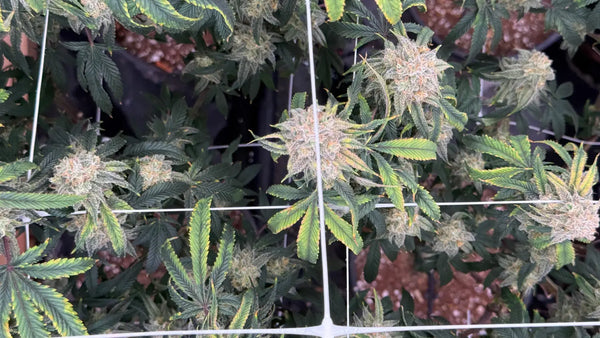
Advanced Cultivation Strategies and Techniques
Modern cannabis cultivation methods incorporate sophisticated techniques that optimize plant performance regardless of growing environment. Understanding these advanced strategies helps cultivators maximize their results while adapting to specific challenges of indoor or outdoor cultivation.
Genetic Selection and Breeding Programs
Strain selection represents a fundamental decision that influences all subsequent cultivation outcomes. Indoor cultivation benefits from genetics selected for compact growth patterns, high resin production, and consistent performance under artificial conditions. Indica-dominant varieties often perform well indoors due to their manageable size and dense flower development.
Outdoor cultivation requires genetics adapted to local climate conditions, including factors like flowering time, mold resistance, and temperature tolerance. Sativa-dominant varieties often excel outdoors where unlimited vertical space allows for natural growth expression, while hybrid varieties can provide balanced characteristics suitable for various outdoor conditions.
Breeding programs focused on specific cultivation environments can develop superior genetics over time. Indoor breeders select for traits like short internodal spacing, heavy resin production, and rapid flowering times. Outdoor breeders prioritize disease resistance, environmental stress tolerance, and optimal flowering timing for local climate conditions.
The development of feminized seeds has revolutionized both indoor and outdoor cultivation by eliminating male plants that don't produce THCA-rich flowers. Autoflowering genetics provide additional options for outdoor cultivators seeking multiple harvests per season or indoor growers wanting simplified lighting schedules.
Training and Plant Management Techniques
Plant training methods optimize light exposure and maximize yield potential within space constraints. Indoor cultivation commonly employs techniques like Screen of Green (SCROG), Low Stress Training (LST), and Sea of Green (SOG) to create even canopies that utilize artificial lighting efficiently.
SCROG techniques involve training plants horizontally beneath a screen to create uniform canopy heights and maximize light penetration to all flowering sites. This method works particularly well indoors where precise height control maximizes lighting efficiency and prevents upper branches from shading lower growth.
Outdoor cultivation benefits from training techniques that accommodate natural growth patterns while optimizing sun exposure. Low Stress Training allows plants to maintain natural structure while improving light penetration and air circulation. Topping and fimming techniques can increase branching and create bushier plants suitable for outdoor growing conditions.
Pruning strategies differ between cultivation methods, with indoor growers often removing lower branches that receive insufficient light, while outdoor growers may focus on improving air circulation and preventing disease in dense canopies.
Integrated Pest Management Strategies
Pest management approaches must adapt to the specific challenges of each cultivation environment. Controlled environment cannabis production can implement strict quarantine procedures and environmental controls that prevent pest establishment.
Indoor cultivation benefits from biological control methods including beneficial insects like predatory mites, ladybugs, and parasitic wasps that can be introduced in controlled environments. Sticky traps, air filtration, and environmental monitoring help detect pest problems early when intervention is most effective.
Outdoor cultivation must address greater pest diversity but can leverage natural ecosystem relationships. Companion planting with herbs and flowers can attract beneficial insects while deterring harmful pests. Physical barriers, including row covers and netting, protect plants during vulnerable growth stages.
Organic and sustainable pest management approaches benefit both cultivation methods while meeting consumer demand for clean, residue-free products. Essential oil sprays, beneficial bacteria, and cultural practices can effectively manage pest populations without chemical residues.
Harvest Timing and Post-Harvest Processing
Optimal harvest timing significantly impacts final product quality and THCA content. Trichome examination using magnification reveals the ideal harvest window when trichomes transition from clear to milky white, indicating peak cannabinoid content.
Indoor cultivation provides greater control over harvest timing since environmental conditions remain stable. Cultivators can monitor trichome development closely and harvest at the precise optimal moment without concern for weather changes.
Outdoor cultivation requires balancing optimal harvest timing with weather forecasts and seasonal factors. Early season frost, rain, or other adverse weather may force harvest decisions that compromise optimal timing for maximum quality.
Post-harvest processing techniques affect final product quality regardless of cultivation method. Proper drying conditions, typically 60-65°F with 45-55% humidity, preserve cannabinoids and terpenes while preventing mold development. Curing processes that gradually reduce moisture content over 2-8 weeks enhance flavor development and improve overall quality.
Sustainability and Environmental Impact
The environmental implications of indoor vs outdoor cannabis cultivation extend beyond immediate production concerns to encompass broader sustainability considerations that increasingly influence consumer preferences and regulatory frameworks.
Carbon Footprint Analysis
Indoor cultivation typically generates significantly higher carbon emissions due to intensive energy consumption for lighting and climate control systems. Studies suggest indoor cannabis production can generate 2000-5000 kg CO2 equivalent per kilogram of dried flower, primarily from electricity consumption.
LED lighting technology has substantially reduced energy consumption compared to traditional HID lighting, with modern LED systems achieving 2.5-3.0 μmol/J efficiency compared to 1.3-1.7 μmol/J for HPS lighting. However, even efficient indoor systems require 1000-2000+ kWh per pound of finished product.
Outdoor cultivation demonstrates dramatically lower carbon emissions, primarily limited to equipment manufacturing, transportation, and minimal processing energy. Solar-powered outdoor operations can achieve near-zero carbon footprints during active cultivation periods.
Renewable energy integration can significantly reduce indoor cultivation's environmental impact. Solar panel installations, wind power, and other renewable sources can offset substantial portions of indoor growing electricity consumption, though initial investment requirements are considerable.
Water Usage and Conservation
Water consumption varies significantly between cultivation methods and specific techniques employed. Efficient indoor hydroponic systems can achieve optimal production with 2-6 gallons per ounce of dried flower through recirculating nutrient solutions and precise delivery systems.
Outdoor soil-based cultivation typically requires 15-30 gallons per ounce of dried flower, though efficient irrigation systems and water conservation techniques can reduce consumption substantially. Drip irrigation, mulching, and soil improvement practices enhance water retention and reduce overall requirements.
Water quality considerations affect both cultivation methods, with indoor systems requiring consistent pH and mineral content while outdoor systems must adapt to variable water sources. Filtration and treatment systems can optimize water quality for either method.
Rainwater collection and greywater recycling systems can substantially reduce water consumption for outdoor operations while providing sustainable water sources during dry periods.
Waste Management and Recycling
Indoor cultivation generates substantial organic waste including spent growing media, plant trimmings, and root systems. Composting programs can convert this waste into valuable soil amendments, creating closed-loop systems that reduce environmental impact.
Outdoor cultivation produces larger volumes of plant waste but can more easily integrate with on-site composting and soil building programs. Large outdoor operations can develop comprehensive waste management systems that enhance soil health while reducing disposal costs.
Packaging waste represents a significant environmental concern for both cultivation methods. Sustainable packaging alternatives, including recyclable and biodegradable materials, can reduce environmental impact while meeting regulatory requirements.
Equipment recycling and refurbishment programs can extend the useful life of cultivation equipment while reducing manufacturing demand for new products.
Regulatory Compliance and Environmental Standards
Environmental regulations increasingly influence cultivation method selection and operational procedures. Energy efficiency standards, water usage limitations, and waste disposal requirements vary by jurisdiction and may favor specific cultivation approaches.
Organic certification programs typically favor outdoor cultivation methods that utilize natural soil systems and avoid synthetic inputs. However, indoor systems can achieve organic certification through appropriate growing media and nutrient programs.
Environmental impact assessments may be required for large cultivation facilities, particularly indoor operations with significant energy consumption or outdoor operations affecting local watersheds.
Future regulatory trends may impose carbon emission limits or energy efficiency requirements that could significantly impact cultivation method viability in different regions.
Expert Recommendations and Best Practices
Successful cultivation requires understanding how to optimize each method's advantages while mitigating inherent challenges. Industry experts have developed proven strategies that maximize THCA flower quality and operational efficiency.
Site Selection and Facility Design
Indoor facility design must prioritize efficiency, scalability, and regulatory compliance. Optimal layouts maximize growing space while providing adequate access for maintenance and harvesting operations. Modular designs allow for expansion and reconfiguration as operations evolve.
Outdoor site selection requires careful consideration of climate patterns, soil conditions, water availability, and regulatory compliance. Microclimate evaluation helps identify optimal growing locations that provide protection from adverse weather while maximizing beneficial environmental conditions.
Security considerations affect both cultivation methods, with indoor facilities requiring comprehensive access control and monitoring systems while outdoor operations need perimeter security and crop protection measures.
Infrastructure planning must accommodate processing, storage, and distribution requirements that vary significantly between cultivation methods and scale of operation.
Quality Control and Testing Protocols
Comprehensive testing protocols ensure product quality and regulatory compliance regardless of cultivation method. Regular testing for cannabinoids, terpenes, pesticides, heavy metals, and microbials provides quality assurance and identifies potential problems early.
Standard operating procedures (SOPs) document cultivation practices and ensure consistency across multiple harvest cycles. These procedures become particularly important for indoor operations seeking to replicate successful results consistently.
Environmental monitoring systems track critical parameters and provide data for continuous improvement programs. Historical data analysis helps identify optimal growing conditions and potential areas for enhancement.
Harvest and post-harvest protocols significantly impact final product quality. Proper timing, handling, and processing procedures preserve cannabinoids and terpenes while ensuring product safety and shelf stability.
Technology Integration and Automation
Modern cultivation increasingly incorporates automation and technology to improve efficiency and consistency. Automated irrigation systems, climate control, and monitoring equipment reduce labor requirements while improving precision.
Data collection and analysis systems help optimize growing conditions and identify trends that affect yield and quality. Internet of Things (IoT) sensors provide real-time monitoring of environmental conditions, nutrient levels, and plant health indicators.
Integrated management software systems coordinate multiple aspects of cultivation operations, from seed to sale tracking to environmental monitoring and quality control documentation.
Artificial intelligence and machine learning applications increasingly assist with decision-making, predictive maintenance, and optimization of growing conditions based on historical performance data.
Frequently Asked Questions
Q: Which cultivation method produces higher THCA concentrations?
Indoor THCA cultivation typically produces higher and more consistent THCA concentrations due to optimized environmental conditions and precise control over all growing variables. Indoor-grown cannabis often tests 2-5% higher in total cannabinoids compared to outdoor counterparts. However, exceptional outdoor cultivation can achieve comparable potency levels when conditions align favorably.
Q: What are the main cost differences between indoor and outdoor cultivation?
Initial investment for indoor cultivation is substantially higher, typically requiring $200-500 per square foot compared to $50-150 per plant capacity for outdoor operations. However, indoor systems produce 4-6 harvests annually while outdoor systems typically produce one annual harvest. Ongoing electricity costs for indoor cultivation can be substantial, often representing 25-40% of operational expenses.
Q: How do terpene profiles differ between cultivation methods?
Outdoor THCA growing often produces more complex and intense terpene profiles due to natural environmental stressors and full-spectrum sunlight. Indoor cultivation provides consistent terpene production but may require specialized techniques to achieve the diversity found in outdoor-grown cannabis. Both methods can produce exceptional terpene profiles with proper cultivation techniques.
Q: Which method is more environmentally sustainable?
Outdoor cultivation demonstrates significantly lower environmental impact, with carbon emissions typically 70-90% lower than indoor methods. Indoor cultivation requires intensive energy consumption for lighting and climate control, though renewable energy integration can substantially reduce environmental impact. Water usage varies with specific techniques, but efficient systems can achieve good conservation in both methods.
Q: Can indoor cultivation replicate the benefits of natural sunlight?
Modern LED lighting technology provides excellent full-spectrum light that supports healthy plant development and cannabinoid production. However, natural sunlight delivers unique spectral qualities and intensities that indoor systems cannot completely replicate. Some cultivators use hybrid approaches, including greenhouses and light supplementation, to combine benefits of both methods.
Q: What factors should determine cultivation method selection?
Key considerations include available capital, local climate conditions, regulatory environment, market demands, and production goals. Cannabis cultivation methods should align with specific business objectives, whether prioritizing consistency, yield, quality, or cost efficiency. Many successful operations combine both methods to optimize different aspects of their production strategy.
Q: How do pest management strategies differ between methods?
Controlled environment cannabis production allows for strict quarantine procedures and biological control methods in contained environments. Outdoor cultivation faces greater pest diversity but benefits from natural predator relationships and ecosystem balance. Both methods can achieve excellent pest control through integrated management approaches adapted to their specific challenges.
Q: What role does genetics play in cultivation method selection?
Strain selection significantly impacts success in either cultivation environment. Indoor cultivation benefits from compact, high-resin genetics selected for artificial conditions, while outdoor cultivation requires varieties adapted to local climate conditions with appropriate disease resistance and flowering timing. Many modern varieties perform well in both environments with proper cultivation techniques.
Conclusion: Choosing the Right Path for Your Goals
The decision between indoor THCA cultivation and outdoor THCA growing ultimately depends on your specific goals, resources, and market conditions. Both methods can produce exceptional THCA flower quality when implemented with expertise and attention to detail.
Indoor cultivation excels in producing consistent, high-potency products with predictable characteristics and year-round production capabilities. The controlled environment enables optimization of every variable affecting plant development, often resulting in premium products that command higher market prices. However, the substantial initial investment and ongoing operational costs require careful financial planning and market analysis.
Outdoor cultivation offers environmental sustainability, lower operational costs, and the potential for unique product characteristics influenced by natural growing conditions. The reduced barriers to entry make outdoor cultivation accessible to smaller-scale operators, while the natural growing environment can produce exceptional quality when properly managed.
Many successful cultivation operations utilize hybrid approaches that combine elements of both methods. Greenhouse cultivation provides partial environmental control while maintaining natural light benefits. Light supplementation can enhance outdoor growing during suboptimal periods. Season extension techniques allow outdoor growers to achieve multiple harvests annually.
The cannabis industry continues evolving rapidly, with advancing technology, changing regulations, and developing consumer preferences influencing optimal cultivation strategies. Successful cultivators remain adaptable, continuously improving their techniques while maintaining focus on product quality and operational efficiency.
Whether you choose controlled environment cannabis production or natural outdoor cultivation, success requires commitment to excellence, continuous learning, and adaptation to changing market conditions. The best cultivation method is the one that aligns with your resources, goals, and ability to execute consistently over time.
As you develop your cultivation strategy, consider starting with the method that best matches your current resources and experience level while planning for future expansion and optimization. Both indoor vs outdoor cannabis cultivation methods offer paths to success in this dynamic and rewarding industry.
The future of cannabis cultivation will likely see continued integration of technology, sustainability practices, and consumer-driven quality standards. By understanding the strengths and challenges of each cultivation method, you can make informed decisions that position your operation for long-term success in this evolving market.

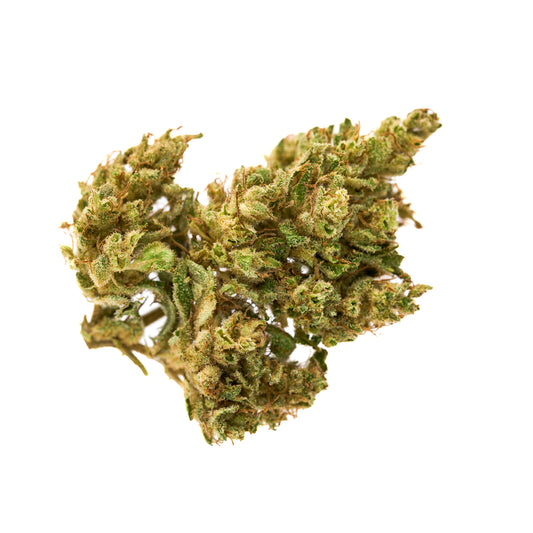
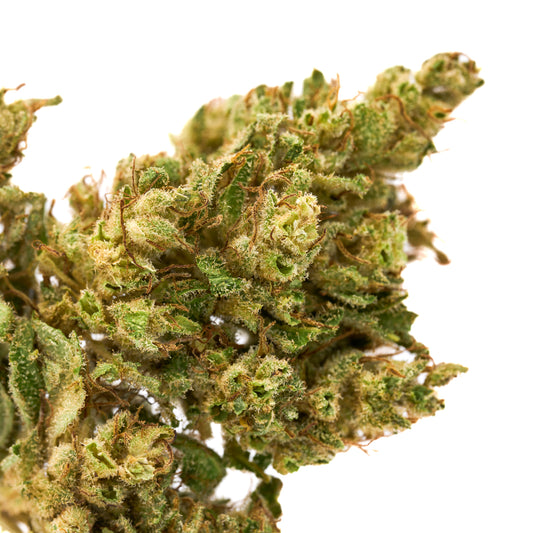
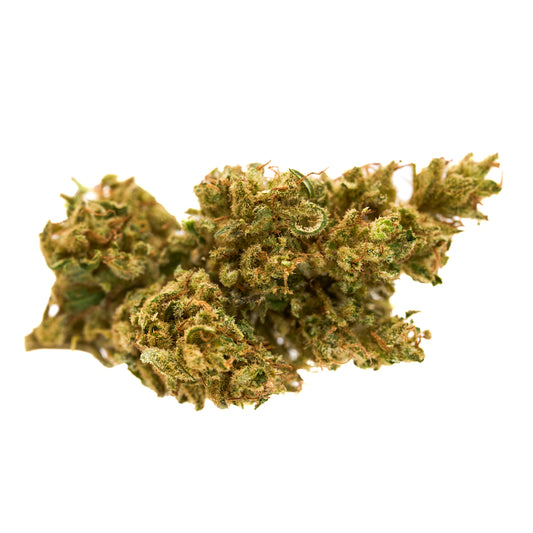
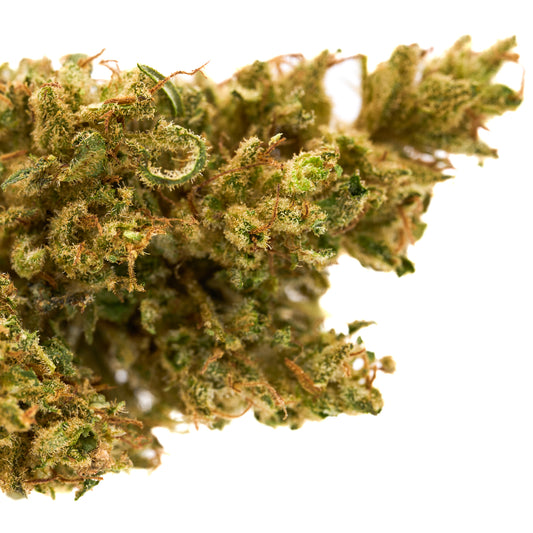
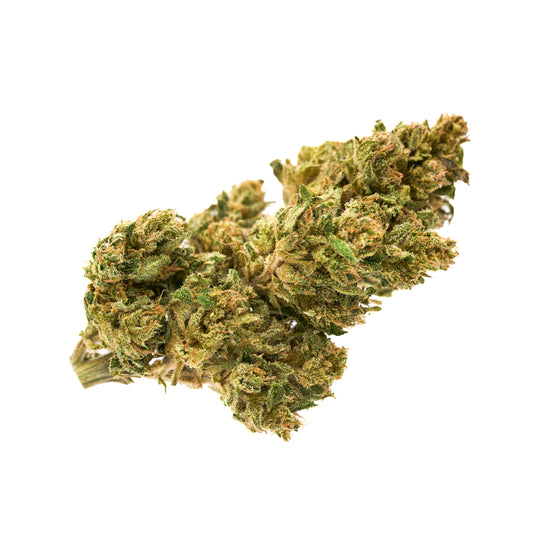
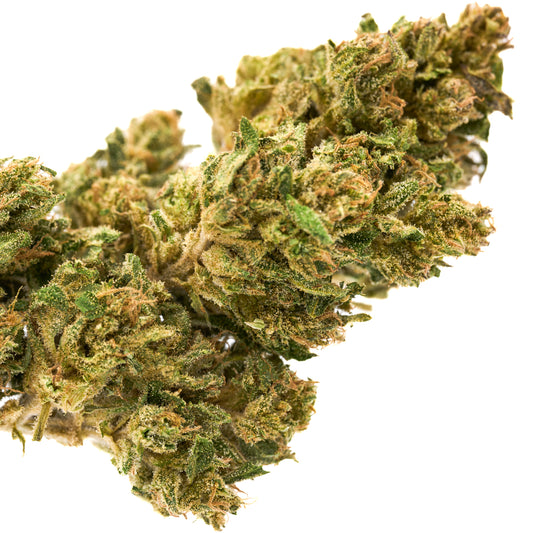



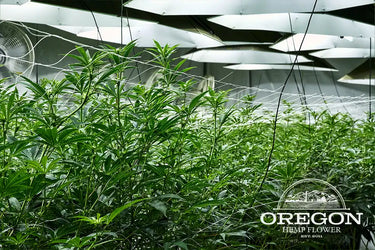

Leave a comment
Please note, comments need to be approved before they are published.